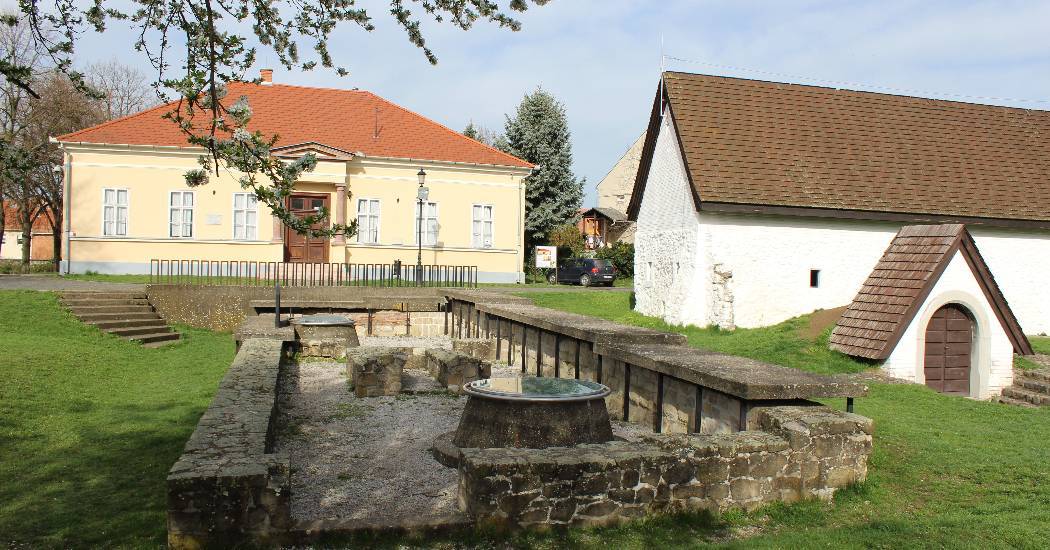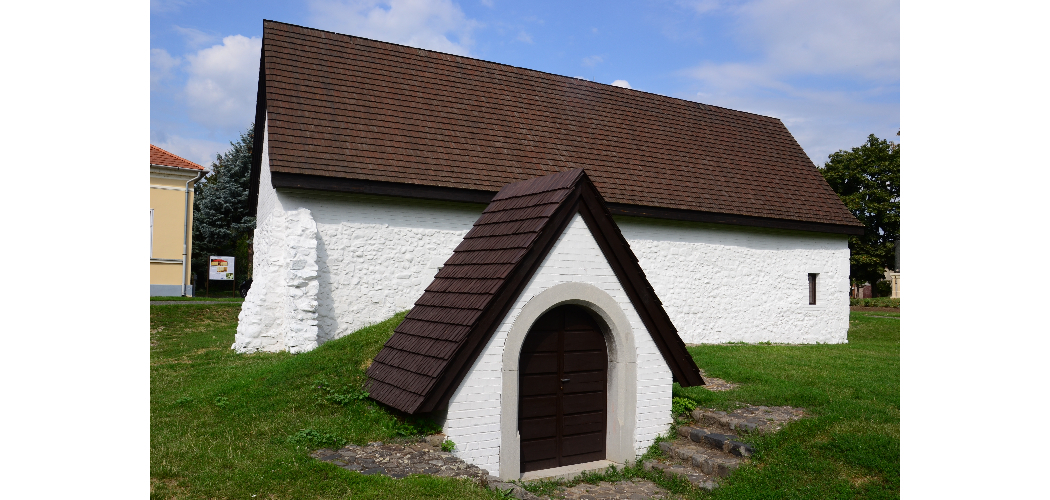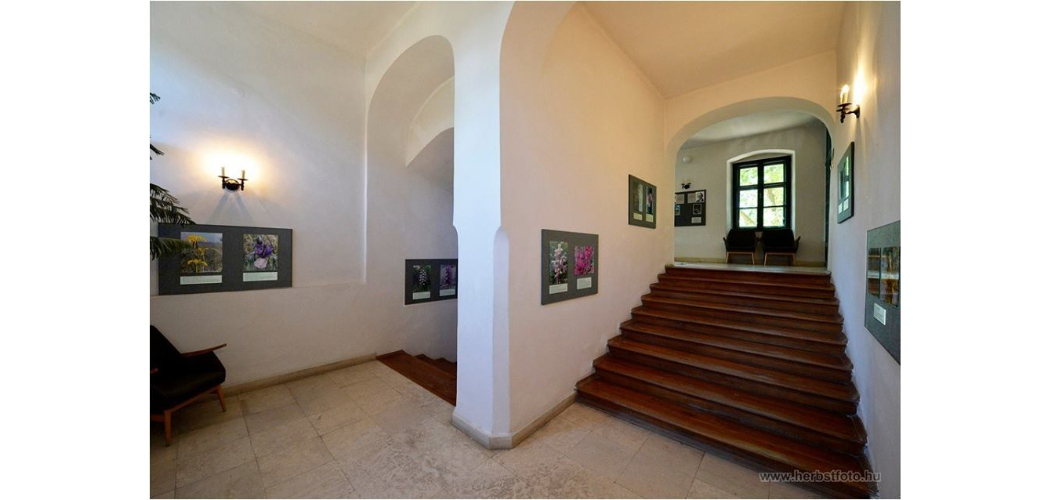
MuseumTrip takes you on an in-depth journey to discover the many layers of knowledge kept within museums. Hungarian Museums Online visits a new museum every fortnight (the 1st and 15th of every month) to discover and present the history, collections, research activities and programmes of these – major and minor, older and newer – institutions.
Our second journey takes us to the Pásztó Museum, where we begin by discovering the history and exhibitions of the museum.
The Pásztó Museum, youngest of the Nógrád County Museum Organisation’s institutions, started in October 1984. Some of the heritage sites and works of art that facilitated the founding of the museum have already existed. In the 1960s and 1970s excavations led by Dr. Ilona Valter have unearthed a notable medieval heritage site, which was then turned into an exhibition. Graphic artist Kálmán Csohány, two-time recipient of the Munkácsy Prize, donated a valuable contemporary art collection to his hometown. High school teacher Nándor Pintér compiled a significant local historical collection during the 1970s. The author started at the Nógrád County Museum Organisation as a natural science museologist and had the job to take over, preserve and further develop the Nógrád County Natural Science Collection initially collected by Baron Béla Lipthay.
It was obvious that a museum would serve best to ensure the professional treatment of the above artefacts. The management of the County Museum Organisation played a major role in bringing the project to fruition, as did Natural Historical Museum Inspector Dr. Tibor Kecskeméti, who provided versatile help for several decades.
Naturally, all this did not go effortlessly. The 1980s and 1990s were a period of temporary solutions which saw the natural historical collection being moved multiple times. Not until 1997 did the institution find a suitable home. We then received the entire baroque monastery complex, which remains until today the main museum building.
The Pásztó Museum was for a long time a one-person institution. In 2001 we could hire an art historian. Gabriella Shah organised the Csohány collection, authored a book and a CD about the artist’s work, and installed the Csohány Gallery. 2005 saw the hiring of the second natural historical museologist, Andrea Pászti. She conducted the applications for EU grants in addition to managing the research stockroom in the monastery building’s basement. Evelin Zentai’s work on museum education won countrywide renown.

Permanent Exhibitions of the Pásztó Museum
The Pásztó Headmaster’s House
This early 15th century tripartite house was the first exhibition space of the museum. It was the home of the Pásztó cantors all the way until 1968. Its small stone window sills caught the attention of heritage experts. Excavations in 1978-79 unearthed a virtually complete set of medieval household tools in a grain pit that had been walled in for several centuries, beneath the floor of the pantry. The most notable object in the kitchen is a renovated half-open stove. Reconstructed furniture in the living room restored its medieval atmosphere. The cellar houses an exhibition about the medieval vineyard culture of the Western Mátra hills. Writer Erzsi Kertész wrote a romanticised book about how the trove had been hidden in her book “In the Footsteps of the Dragon”.

Medieval Ruin Garden
Excavated in 1965, the foundations of the former Benedictine, later Cistercian abbey can be seen today as a ruin garden. In 2000, the group of statues depicting King St. Stephen and the Virgin Mary was placed in the abbey’s sanctum. Foundations of a smithy remind us of the former industrial activities of the monastery. The abbey operated until 1526. It was severely ruined during the Turkish occupation. Cistercians returning around 1690 did not rebuild it, but instead erected the baroque monastery building which is still standing, and today serves as the main museum building.
The foundations of the early medieval abbey and its annexes remained hidden for centuries. Dr. Ilona Valter uncovered them in the autumn of 1965, and excavated it during the following years.
Medieval Glassblowers’ Hut
The hut was also unearthed by Dr. Ilona Valter in 1986. Laboratory analysis of melts found around the three furnaces’ foundations prove that glass manufacturing activities were taking place here during the 12th century. The building was destroyed in a fire during the 13th century. Today, two of the three furnace foundations are protected by a concrete edge and a glass cover.
Medieval history of the Cistercian Order
In three halls on the ground floor of the baroque monastery building a three-language (Hungarian, English, French) exhibition presents the founding of the order and its spread through Europe. The second hall introduces the visitor to the order’s Hungarian monasteries, and exhibits artefacts found during the excavation of the early medieval Pásztó monastery. The third hall showcases the economical activities of the order. Artefacts found during the excavation of the smithy and the glassblowers’ hut are exhibited here, as well as a burnt grain trove which was destroyed during a fire in the 12th century.
Centuries in Pásztó
An exhibition in a ground floor hall and a corridor guides the visitor through the history of the town and its surroundings from the Bronze Age through the 20th century. The inner hall houses artefacts and documents of local craftsmen. The most valuable exhibit is a restored 19th century guild crest. Secondary school teacher Nándor Pintér collected the data and the exhibits on local history in the 1970s.
Local Flora
Colour photos and short descriptions on the walls by the stairs leading up to the monastery building illustrate some of the typical and beautiful species of the surrounding area’s natural vegetation. The photos are arranged in chronological order of blooming from early spring to late summer.

Messages From Millions of Years Ago
The permanent natural historical exhibition of the Nógrád County Museum Association is located on the corridor of the upper floor’s west wing. The exhibition chronologically showcases the minerals, rocks, fossils and environmental changes from the Triassic Period, 250 million years ago, until the end of the Ice Age. The most significant exhibits are early Miocene prehistoric elephant fossils found in the Salgótarján Basin, prehistoric plant finds from Ipolytarnóc, fossils of rich marine life of the Baden Sea, and fossils of animals that used to live in and around the Pannonian Lake.
Educational Storeroom and Museum Paedagogical Teaching Space
A 84 million HUF TIOP (Social Infrastructure Operative Programme) grant enabled the complete renewal of the 200 square metre cellar system beneath the Pásztó Cistercian monastery. In addition to storing the natural historical collection of the Nógrád County Museum Association under modern conditions, the spaces here are equipped with state-of-the-art educational material that take age-specific traits into account for museum paedagogical events. This investment has enriched both the building itself and the operation of the institution for decades to come. Writing the application and managing the project was the result of Andrea Babinszki-Pászti’s and Evelin Sári-Zentai’s hard work.
The Rajeczky Memorial Room
Benjamin Rajeczky, the last prior of the Pásztó Cistercian monastery, was an influential educator and musicologist, a renowned expert on medieval sacred – Gregorian – music, and an individual who radiated intellect and humanity.
The first room of the exhibition showcases documents of his life, starting with those of his family background, then memories of his work as a teacher between the world wars, the struggles of the period between 1945 and 1949, and the results of his scientific work: manuscripts, phonograph records which he edited, and his awards. The inner room shows the interior of his Pásztó home with simple furniture, an indescribably rich private library, a tape recorder and a typewriter which he used to collect folk music. The unfinished sheet that he last fed into the typewriter is still in the machine.

Kálmán Csohány Gallery
Two-times recipient of the Munkácsy Prize, graphic artist Kálmán Csohány is one of the most famous people born in Pásztó. The gallery introduces the visitor to his life, and significant items of his work as a graphic and ceramic artist.
The first room exhibits works directly related to his hometown, while his graphic series are shown in the second room. The third room in the gallery temporarily also houses works by Csohány.
István Gaál Memorial Room
The film director spent his childhood years in Pásztó. These experiences stayed with him throughout his life. The first part shows the interior of his living room in Buda, with his furniture and books. The inner part of the memorial room exhibits the documents of his career as a filmmaker: screenplays, posters, period press reviews.
A cinematograph built into the exhibition allows visitors to view a documentary about Gaál’s life, as well as a few typical scenes from his movies.
Art historian Shah Gabriella, today director of the Béla Dornyay Museum in Salgótarján, was behind the realisation of both the Csoháry Gallery and the István Gaál Memorial Room.